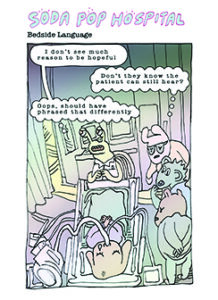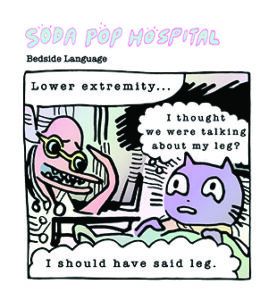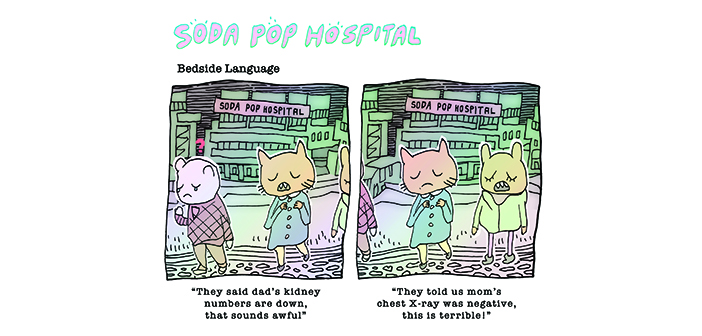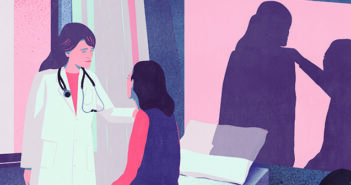Pictures help physicians see the impact of their words.
The human brain processes images 60,000 times faster than text. Because emotions and visual information are processed in the same part of the brain, images also have the power to leave a more lasting impression on learners. Recognizing the power of visual experiences, an increasing number of medical schools incorporate visual arts into their curricula.
One visual art form—comics—can be a particularly compelling medium in medical education. Some medical schools use comics to help students process their own challenging experiences and to aid in professional identity formation. Schools also tap the capacity of comics to foster empathy, so that students learn not just the biology of a disease, but also the experience of living with that condition.
 Comics really shine when teaching a key aspect of medicine: communication skills. Effective communication forms the core of a strong doctor-patient relationship; miscommunication can lead to confusion, frustration, anxiety, and possibly offense. Unfortunately, techniques and word choices that foster communication are not always intuitive. And during medical school, future physicians spend far more time learning new terminology than learning how to convey the complex information embedded in that terminology.
Comics really shine when teaching a key aspect of medicine: communication skills. Effective communication forms the core of a strong doctor-patient relationship; miscommunication can lead to confusion, frustration, anxiety, and possibly offense. Unfortunately, techniques and word choices that foster communication are not always intuitive. And during medical school, future physicians spend far more time learning new terminology than learning how to convey the complex information embedded in that terminology.
Comics are powerful tools for teaching communication because they can simultaneously display multiple perspectives. They can illustrate the mismatch between what a doctor says versus what a patient hears and understands. They can safely use humor to illuminate awkward moments, and they allow learners to step back, become the observer, and recognize themselves in an interaction.
 Physician and artist Ian Williams coined the term “graphic medicine” and describes it as “the intersection between the medium of comics and the discourse of healthcare.” Comics encompass an exciting element in the growing field of graphic medicine in medical education, and The Warren Alpert Medical School now offers a workshop in medical comics, along with its other humanities electives.
Physician and artist Ian Williams coined the term “graphic medicine” and describes it as “the intersection between the medium of comics and the discourse of healthcare.” Comics encompass an exciting element in the growing field of graphic medicine in medical education, and The Warren Alpert Medical School now offers a workshop in medical comics, along with its other humanities electives.
The comics seen here are from the Soda Pop Hospital series, which is a collaborative effort of Vinald Francis, medical illustrator at The Warren Alpert Medical School, and Daniel Baxter, a graphic novelist and art director based in Pittsburgh. They worked with physicians Rebekah Gardner and Kate Cahill to create these panels, which illustrate the impact of language used by physicians when at a patient’s bedside.
Other comics from this series have been accepted for publication in the Annals of Internal Medicine.




